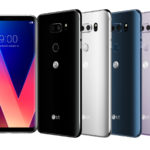Side hustles are no longer optional in South Africa. With food inflation still above 8 percent and electricity, transport and mobile data costs climbing…
6 smartphone trends that need to be stopped right now
Smartphones have evolved at an amazing pace, going from single-core Symbian devices with 2MP cameras to today’s octacore, dual-camera-toting superphones.
Despite this rapid evolution, we also see a few trends that really don’t need to happen. We look at a few that just need to stop.
Removing the headphone jack
Okay, look… we get it. You prefer Bluetooth anyway. Or maybe you don’t mind the switch to Lighting/USB Type-C wired accessories. Whatever the case may be, you can still use Bluetooth or USB Type-C/Lightning headphones if your phone has a 3.5mm jack. They are not mutually exclusive.
Firms claim that it’s one less port to water-proof, and this is indeed the case. But a quick look at LG, Samsung and Sony shows that you can indeed have your cake and eat it (underwater if you want, but it’ll be soggy).
Curved displays
I like my Galaxy S8 (review) seed unit. In fact, I’d go so far to say that the smartphone has easily been one of my top three favourite devices of the year. But I’d be lying if I said I wasn’t afraid of dropping it, as gorgeous as that screen is.
The S8 is the latest Samsung device to follow the curved screen trend, but the phenomenon is also resulting in a higher repair bill and a more fragile design. After all, if the phone lands on the corner, it’s practically guaranteeing a screen crack. In all fairness, improved durability rather than completely stopping the trend is needed here. But flat-screened variants would be lovely too.
Restricting features to one variant
We’ve seen it with Apple devices and the latest Huawei phones, but manufacturers are increasingly keeping features exclusive to one variant. In Apple’s case, we see the iPhone 7 Plus and 8 Plus being the sole device to get dual cameras, while the smaller phone is stuck with a single-camera setup. Meanwhile, Huawei’s Mate 10 Pro lacks a headphone jack, while the Mate 10 doesn’t.
This isn’t the only case of needless restrictions, as LG’s G6 (review) touted wireless charging, quad-DAC audio hardware and 64GB of storage. Europe and Africa got none of these features when the G6 landed. Heck, the US phones only had wireless charging, while Korean models packed quad-DAC audio only.
“Minimalistic” camera apps that are lacking in features
Say what you want to about Samsung, LG and other Android manufacturers, but you can’t dispute that their camera apps are chock-full of features. The same can’t be said for the likes of Lenovo and Nokia — although Lenovo’s latest app does help.
In their quest to deliver a spartan Android experience, these brands failed to offer nearly as many features as rivals. Hell, the Nokia camera app doesn’t even have shutter speed controls. It’s especially notable when you consider the Xiaomi Mi A1, which runs stock Android but features the full Xiaomi camera app anyway.
Speaker grilles but no speaker
The trend of two speaker grilles at the bottom of a smartphone, flanking the microUSB/Type-C port, has been around for a while now. Sure, they’re not front-facing speakers, but they still do a decent job.
Where it gets weird is when companies (Huawei and Xiaomi come to mind) slap two speaker grilles at the bottom, but only one grille hosts a speaker. Yep, these companies seem to value symmetry over actual practicality.
Where are the customisable shortcuts?
We’ve seen Samsung do it with the Galaxy S8 and we’ve seen Google do it with the Pixel 2, but locking down hardware shortcuts is a pretty selfish move. In Samsung’s case, the company only allows the Bixby button to launch Bixby. Meanwhile, Google only allows the Pixel 2’s squeezable frame to launch the Google Assistant.
Now, in both cases, there are third-party apps to circumvent these restrictions, but they’re rough workarounds at best. Yes, Samsung and Google want people to use their native services, but forcing it on people in this way isn’t ideal.
Are there any recent smartphone trends you don’t care for? Let us know below!

